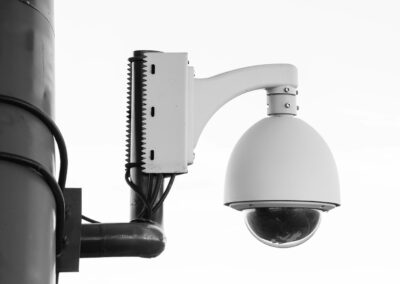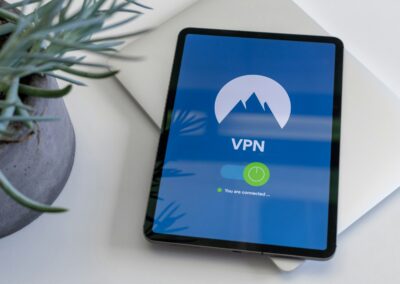Aligning Zero Trust with Regulatory Compliance
Understanding Zero Trust Principles
Zero Trust Principles and Regulatory Compliance are increasingly intertwined as organizations strive to bolster their cybersecurity frameworks. The Zero Trust model is a security paradigm that assumes no entity, whether inside or outside the network, can be trusted implicitly. Instead, every access request must be verified, ensuring stringent security measures are always in place.
In regions like Saudi Arabia and the UAE, where technological advancements are rapidly transforming the business landscape, the adoption of Zero Trust principles is crucial. These regions, including major cities like Riyadh and Dubai, are becoming global hubs for innovation, making robust cybersecurity frameworks essential for protecting sensitive data and maintaining trust.
Zero Trust principles are designed to minimize the risk of data breaches by implementing strict identity verification processes, continuous monitoring, and segmentation of networks. By assuming that threats could be present anywhere, this approach significantly reduces vulnerabilities and enhances the overall security posture of an organization.
Meeting Regulatory Compliance Requirements
Regulatory compliance is a critical aspect of modern business operations, particularly in sectors such as finance, healthcare, and government. Compliance frameworks like GDPR, HIPAA, and CCPA impose stringent requirements on organizations to protect sensitive data and ensure privacy. Zero Trust principles align well with these regulatory requirements, providing a robust framework for achieving compliance.
In Saudi Arabia and the UAE, regulatory bodies are increasingly emphasizing the importance of cybersecurity and data protection. Implementing Zero Trust principles helps organizations in these regions meet compliance requirements by ensuring that all access requests are authenticated, authorized, and encrypted. This proactive approach not only meets regulatory standards but also builds trust with customers and partners.
Moreover, Zero Trust principles support continuous compliance by maintaining stringent security controls and monitoring activities in real-time. This continuous oversight is essential for identifying and addressing potential compliance issues before they escalate, ensuring that organizations remain compliant with evolving regulatory requirements.
Enhancing Cybersecurity with Zero Trust
Zero Trust principles provide a comprehensive approach to enhancing cybersecurity. By segmenting networks and restricting access based on the principle of least privilege, organizations can limit the potential impact of a breach. This segmentation ensures that even if a threat actor gains access to one part of the network, they cannot easily move laterally to other sensitive areas.
In the dynamic business environments of Riyadh and Dubai, where digital transformation is accelerating, Zero Trust principles are particularly valuable. They provide a flexible and scalable security framework that can adapt to the unique needs of different industries and organizations. By continuously verifying access requests and monitoring network activity, Zero Trust helps organizations stay ahead of emerging threats and protect their digital assets.
Additionally, the integration of Zero Trust principles with advanced technologies such as Artificial Intelligence (AI) and Blockchain further enhances cybersecurity. AI can automate threat detection and response, while Blockchain can provide secure, immutable records of transactions. These technologies complement Zero Trust principles, creating a robust, multi-layered security framework.
Implementing Zero Trust in Modern Business
Steps to Implement Zero Trust
Implementing Zero Trust principles requires a strategic approach that involves multiple steps. First, organizations need to identify their critical assets and data, understanding where sensitive information is stored and who needs access to it. This inventory forms the basis for developing a comprehensive Zero Trust strategy.
Next, organizations should implement strict identity and access management (IAM) protocols. This involves verifying the identity of users and devices before granting access to any resources. Multi-factor authentication (MFA) is a key component of IAM, adding an extra layer of security to the authentication process.
Network segmentation is another critical step in implementing Zero Trust. By dividing the network into smaller, isolated segments, organizations can control access to sensitive areas and limit the potential spread of threats. This segmentation should be combined with continuous monitoring to detect and respond to any suspicious activity promptly.
Training and Culture Change
Successful implementation of Zero Trust principles also requires a cultural shift within the organization. Employees at all levels need to understand the importance of cybersecurity and their role in maintaining it. This requires ongoing training and education to ensure that everyone is aware of the latest threats and best practices.
Executive coaching services can play a crucial role in driving this cultural change. By providing leaders with the knowledge and skills they need to champion cybersecurity initiatives, executive coaching helps create a security-first mindset throughout the organization. This top-down approach ensures that cybersecurity is prioritized and integrated into all aspects of business operations.
In regions like Saudi Arabia and the UAE, where business environments are rapidly evolving, fostering a culture of cybersecurity awareness is essential. By embedding Zero Trust principles into the organizational culture, businesses can enhance their resilience against cyber threats and build a strong foundation for long-term success.
Measuring Success and Continuous Improvement
Once Zero Trust principles are implemented, organizations need to continuously measure their effectiveness and seek opportunities for improvement. This involves regularly reviewing and updating security policies, conducting vulnerability assessments, and staying informed about the latest threat intelligence.
Advanced analytics and AI-powered tools can provide valuable insights into the performance of Zero Trust implementations. By analyzing data on access requests, network activity, and security incidents, organizations can identify trends and areas for improvement. This data-driven approach ensures that Zero Trust principles remain effective and aligned with the organization’s evolving security needs.
In the fast-paced business environments of Riyadh and Dubai, continuous improvement is essential for maintaining a strong security posture. By leveraging advanced technologies and fostering a culture of cybersecurity awareness, organizations can stay ahead of emerging threats and ensure the ongoing protection of their digital assets.
Conclusion
Zero Trust principles offer a robust framework for enhancing cybersecurity and meeting regulatory compliance requirements. By assuming that no entity can be trusted implicitly and continuously verifying access requests, organizations can significantly reduce their vulnerability to cyber threats. In regions like Saudi Arabia and the UAE, where digital transformation is driving economic growth, the adoption of Zero Trust principles is essential for protecting sensitive data and maintaining trust.
Implementing Zero Trust requires a strategic approach that involves strict identity and access management, network segmentation, and continuous monitoring. It also requires a cultural shift within the organization, supported by ongoing training and executive coaching. By embedding Zero Trust principles into the organizational culture and leveraging advanced technologies, businesses can enhance their resilience against cyber threats and build a strong foundation for long-term success.
#ZeroTrust #CyberSecurity #RegulatoryCompliance #AI #Blockchain #Metaverse #ExecutiveCoaching #GenerativeAI #ModernTechnology #BusinessSuccess #LeadershipSkills #ProjectManagement #SaudiArabia #UAE #Riyadh #Dubai























